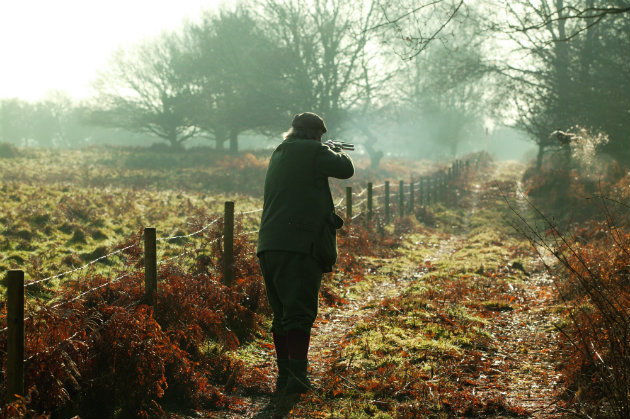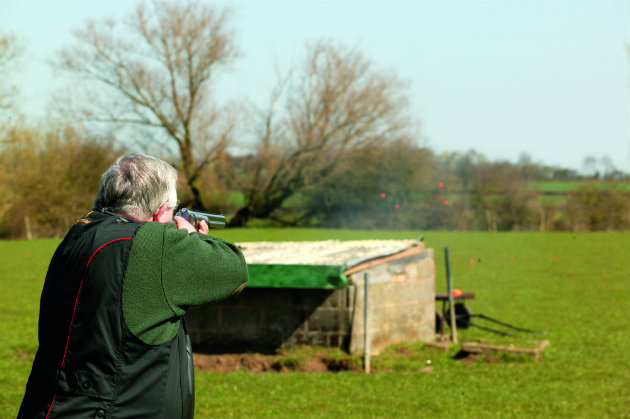Win CENS ProFlex DX5 earplugs worth £1,149 – enter here
The wonder of rough-shooting

Nobody doubts shooting is more popular than it ever has been. It contributes a mind-blowing £2billion to the UK economy annually. And more than 600,000 people use their gun on a regular basis. That equates to one per cent of the country’s entire population.
However, independent researchers believe the actual number of participants is more likely to be a tad or so over 1 million when non-certificate holders shooting under supervision are taken into account. This is amazing. It makes you wonder how a country as small as ours manages to squeeze us all in at the weekend!
Most folk tend not to see the wider picture, which is understandable if you’re tucked up in splendid isolation in a creek on the coast, sitting in a hide shooting woodpigeon or stalking deer along a wood’s edge at dawn. At times like these you really could believe that you’re the only guy in the county who owns a gun.
It’s much the same being part of a small club or syndicate where the shooting experience doesn’t always extend beyond the land it shoots over, or the collective activities of the group. Every now and then, though, a volley of shots from across the valley reminds us that we very definitely are not alone …
A boost from migrants
There’s no reason to think that shooting’s popularity shouldn’t continue to grow, and maybe the next boost in numbers might come from the country’s growing migrant workforce? This is not fanciful thinking: nearly all the craftsmen I’ve met from eastern Europe have very strong links with the countryside, where shooting is very much an accepted way of life, part of the culture.
Up close and personal
On our little farm shoot there’s never a problem finding beaters; we just have to say the word and four or five Polish chaps are there in a shot. They love every minute and bring along an amazing collection of their own made-in-Poland liqueurs to savour after the shooting.
When it comes to sharing the bag, once the Guns have taken a brace or two, the remainder is snapped up by our helpers. They just can’t get enough of game and would live on the stuff, given the chance.
Yes, shooting is in strong fettle, but it has come at a cost. Untold acres of one-man-and-his-dog roughshooting have been gobbled up by commercial driven interests and private syndicates. Long gone, too, are those pure walked-up days comprising maybe one or two neighbouring farmers, their friends and farm workers. Almost all land now has gone “driven crazy”, with some showing pretty poor birds at that.
Fair enough, going “driven” has given more people the chance to shoot than would’ve been the case had walked-up still held sway, but it does mean a generation of shooters has been denied the opportunity to enjoy an entirely different sporting challenge — one that’s very much up close, and personal. Instead of having a bird handed to you on a plate, so to speak, by someone else’s efforts, roughshooting means you and your dog going in search of your own.

Before you go roughshooting, get in some practice on the down-the-line trap at the clay ground
But before you do, put in some practice at the clay ground. Forget all about that high tower you always make a beeline for and instead search out a down-the-line trap. You need to get used to birds rising off the ground, flying straight, or quartering away from the Gun. You can’t predict which way the target will fly when called, and this makes it all the more realistic of the birds you will flush from hedgerows, banks of streams and rough field corners.
Walked-up with a dog (along with wildfowling and stalking) has got to be one of the purest forms of hunting out there because bringing home the bacon demands fieldcraft, stealth and patience. You need to look at your ground and come up with a plan of attack that will put game into the centre of the shoot. Often this means walking the outside boundaries first, then working your way to the middle. Every shoot, though, is different and the challenge is in predicting which way the birds might go, or fly to.
Cherish your own bit of walked-up ground
If you have your own bit of walked-up ground, cherish it — it’s an increasingly precious commodity. And if you have never done it before and want to have a go, put a call into a game agency or two — quite a few organise boundary days for small parties in the company of a keeper.
As for my pal Steve and me, what a time we had on the last day of the season. Thanks to one or two of the other Guns falling sick, the planned mini-driven day was cancelled leaving the two of us kicking our heels — but not for long. Rather than waste the day we whistled up our two dogs for a walk around instead.
Usually those three farm drives are done and dusted inside a couple of hours but walking the lot took us all day to complete. And while it might not sound a lot, the four partridges and three cock pheasants we got between us were a real bonus. But that wasn’t the end.
As we walked home in the late afternoon we chanced to see a teal dropping into a stream on the boundary so we decided to give it till dark and see what else might happen along. Nine mallard did. And we got five of them.
A perfect end to the season? Most definitely. And no tips to pay!
Related Articles
Get the latest news delivered direct to your door
Subscribe to Shooting Times & Country
Discover the ultimate companion for field sports enthusiasts with Shooting Times & Country Magazine, the UK’s leading weekly publication that has been at the forefront of shooting culture since 1882. Subscribers gain access to expert tips, comprehensive gear reviews, seasonal advice and a vibrant community of like-minded shooters.
Save on shop price when you subscribe with weekly issues featuring in-depth articles on gundog training, exclusive member offers and access to the digital back issue library. A Shooting Times & Country subscription is more than a magazine, don’t just read about the countryside; immerse yourself in its most authoritative and engaging publication.







